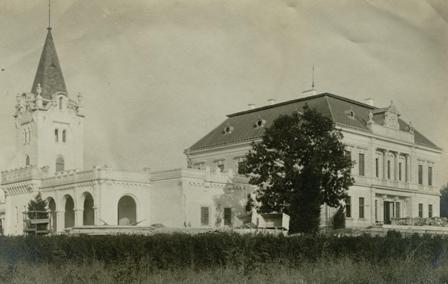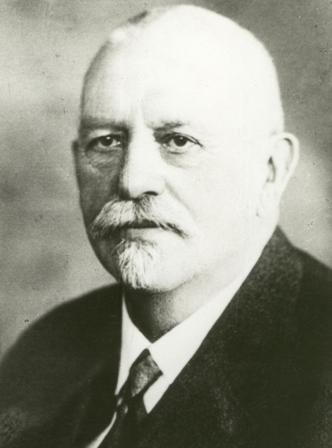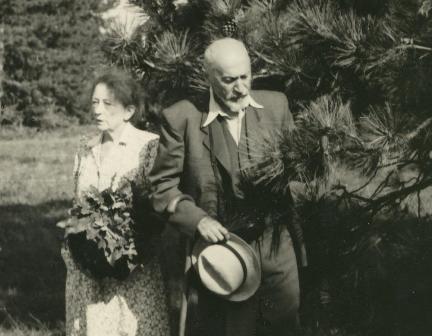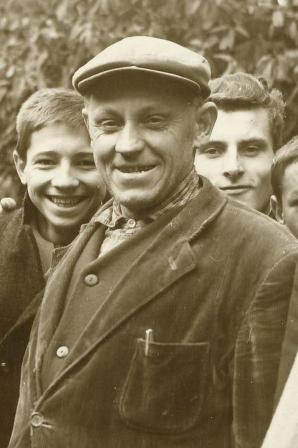"The impression this place makes on all gardeners, garden lovers, dendrologists and land owners is more profound than that of any other garden in Central Europe”.
(C. K. Schneider)
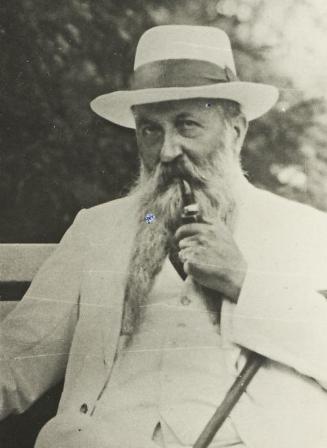
After graduating from the Theresian secondary school in Vienna he studied law at the Universities of Vienna and Budapest. Already as a boy he was passionately interested in plants, and became a diligent student of botany making many collections of dried plants. His interest in evergreen trees was stimulated by frequent trips to southern Europe. To the end of his life he was continuously drawing up plans to establish comprehensive evergreen parks, including proposals to plant massed evergreen trees in suburban areas and municipalities.
On his marriage to Antonia Migazzi in 1892 when he was 23 years old, he added his wife’s surname Migazzi to his own and at the same time obtained part of the manor of Mlyňany (Hungarian Malonya). Soon after he bought some oak and hornbeam woodland from Count Revay, near the village of Vieska nad Žitavou and there, on the edge of the wood he had a mansion built in the neoclassical style with an imposing tower. It was built by Guttmann.
At the same time as the initial planting of the arboretum large amounts of soil were brought in for the construction of terraces below the mansion and behind the mansion, to the north-east, a large alpine garden was established, under the personal supervision of Ambrózy himself. Boulders and rocks were carted in from Prilepy and Klacany. The work was mainly carried out in the winter when there was a plentiful supply of labour. Waterfalls were created amongst the rocks and fed by rainwater collected by the guttering of the mansion.
Ambrózy had many contacts amongst the political elite of Europe as well as with celebrated botanists and dendrologists with whom he discussed plans for his arboretum at Mlyňany (C.K. Schneider, A. Silva-Tarouca, Hozeau de Lehaie, Moesz, Polgar, Gáyer, Redl). His innovative plans did not always meet with comprehension, especially his plan to introduce foreign species to the Carpathian foothills, an area of hot, dry summers and cold winters, characteristic of continental Europe in general. It was thought unlikely to succeed since many of the newly introduced foreign plants, originating mainly from Eastern Asia, had not been sufficiently acclimatized to Central European conditions and previous cultivators had often been disappointed in their attempts to grow them. Ambrózy studied the ecology of these plants and when cultivating them in new surroundings applied a “phased introduction”, growing them temporarily in conditions that suited them before preparing them gradually for more extreme conditions. He made full use of the vogue in Europe at that time for planting exotic new kinds of evergreens, to import specimens from all the famous nurseries of southern and western Europe, especially the latter (Rovelli, Hesse,Peter Smith,G. Arends, Simon Louis,Veitch, Späth, Barbie, G.D.Böhlje, etc.).
Jozef Mišák was a gardener who was invited to work at the arboretum by Ambrózy-Migazzi. Like his employer he had many personal contacts with nurserymen throughout Europe. Ultimately he was to play a major role in maintaining and developing the collection of trees after the departure of the founder and his family in 1914, at which point he was appointed steward of Ambrozy’s estate in Mlyňany.
“Besides Pruhonice, the large park founded by Silva-Tarouca near Prague, Czechoslovakia has another first class ornamental park in the arboretum at Mlyňany which needs to be visited many times over to be fully appreciated."
(J. Mišák)
Jozef Mišák was an enthusiastic dendrologist and a gifted gardener, scion of a well known gardening family from Hořice in Krkonoše in Bohemia. He was born there on the 7th of April, 1866, the son of the owner of a glazing business who also happened to be a passionate gardener and fruit grower. He gained professional experience of gardening while travelling abroad, when he often took the opportunity to visit important nurseries for ornamental garden plants and even helped with the design of several private and public gardens and parks.
The undergrowth in the original 40 ha oak and hornbeam woodland that surrounded the mansion at Mlyňany, provided a suitable microclimate for cultivating evergreen woody plants. It protected the young plants from drying winds, created shade and protected them from severe frosts. With the motto ‘Semper Vireo’ (I am always green or evergreen) and a prickly holly leaf as the emblem of the arboretum, Ambrózy launched his revolutionary project to grow evergreen trees and shrubs in new surroundings, far from their native habitats. This, eventually, made both the arboretum and its creator famous. The principal object of these two enthusiasts, Ambrózy and Mišák was to gather as many foreign species as possible, especially evergreens, and demonstrate their ability to survive under differing conditions.
The first plantings took place in the immediate vicinity of the mansion and on the terraces constructed in 1894. At the four corners of the mansion specimens of Virginian Juniper (Juniperus virginiana) were planted and a little further away single specimens and also groups of prickly holly (Ilex aquifolium). In the park itself, the woodland was gradually transformed as the undergrowth was slowly taken over by various shrubs such as cultivars of the cherry laurel (Prunus laurocerasus) and different species and cultivars of evergreen and semi-deciduous shrubs such as Oregon grape (Mahonia aquifolium), rhododendrons (Rhododendron sp.), Viburnum (Viburnum sp.), Barberry (Berberis sp.), Cranberry (Cotoneaster sp.), Box (Buxus sp.), Honeysuckle (Lonicera sp.), Spindle (Euonymus sp.) and Privet (Ligustrum sp.) together with several taxa of conifer species all of which established a basic framework into which new trees could be inserted. At the same time several varieties of herbaceous plants, particularly perennials, were planted, which led to Ambrózy-Migazzi being dubbed the Floral Count by the local inhabitants.
Between 1905 and 1910 planting in the arboretum reached its first peak which came to an end with the departure of the founder in 1914 which was followed by Jozef Mišák’s absence for a year as well. However, an inventory of the trees and shrubs made by Mišák and Karel Domin in 1925 confirmed the existence of a unique combination of evergreens in the arboretum, and listed more than 300 taxa growing in completely new surroundings. The successes in the cultivation of evergreens achieved at Mlyňany were later published by Mišák in the professional journals (Gartenschönheit, Czech Horticultural Epistles, Czechoslovak Horticultural Epistles, etc.), and in the publication "Broad-leaved Evergreen Trees and Shrubs” which was issued in a German edition by the publishers of Gartenschönheit in Berlin in 1925.
Mlyňany Arboretum quickly became renowned throughout Europe, especially amongst professionals. Its fame spread abroad, mainly by Ambrózy-Migazzi’s friend and world famous dendrologist, Camillo Schneider, who had contacts with other outstanding dendrologists of the day such as Sargent and Rehder, both of whom worked at the renowned Arnold Arboretum in Boston. Camillo Schneider himself was fascinated by the wealth of the collection which Ambrózy-Migazzi and Mišák had gathered in such a short period of time. Mlyňany Arboretum was praised as ‘a shining star in the dendrological universe’. Camillo Schneider was a frequent visitor to Mlyňany between 1905, when he first met Ambrózy, and 1913.

"I shall never forget the hours I was able to spend in that hospitable house and the wealth of advice I received there. We would spend the whole day in the garden, usually accompanied by the head gardener Mišák. In the evening we would sit late into the night, quite often even until dawn, and time and again I would wonder at the enormous store of botanical knowledge possessed by Stefan Ambrózy." (C. K. Schneider)
After Ambrózy-Migazzi’s departure from the Arboretum in 1914, the collections were left in the care of Jozef Mišák. Ambrózy returned to Tana in Hungary. A short time later, in 1922, he established a new arboretum near the village of Kam, not far from his home and close to the town of Szombathely. The Jeli Arboretum, as it was known, was his second scientific foundation, which enabled him through the introduction of new tree species, to verify many of the theories prevalent at the time. He also took up again his childhood hobby of cultivating bulbs and delighted in growing many other perennials as well. Unfortunately, an insidious disease andother circumstances made it impossible for him to supervise closely the development of the collections in this new arboretum. He died on 31 of August 1933 and was buried on 2nd of September according to Lutheran rites at a place which he chose himself not far from his beloved arboretum. This second arboretum, like that of Mlyňany, was afterwards extended and now covers an area of approximately 74 ha, which is managed by the Forestry Commission of Szombathely.
Ambrózy-Migazzi had been preparing for publication a manuscript in which he was attempting to communicate his vast knowledge of and expertise in the cultivation of evergreens, however, the manuscript was somehow lost during the disruptions caused by the First World War. His best known professional works include "Immer-und wintergrüne Laubgehölze (Evergreen and Wintergreen trees)" published in 1913 and "Aus meiner Malonyaner Werkstatt (From my Mlyňany Workshop)" published in 1921. In the latter he explained his concept of an evergreen park and gave practical advice on the creation and maintenance of such a park -
"The most important feature of Mlyňany Arboretum is its collection of evergreens; it is essential that this basic characteristic should never be lost; Evergreen trees and shrubs should always be grown in a mass; the park should never become merely a botanical garden or an ornamental one; an informal spirit should be insisted on in order to create the semblance of a natural environment.
Plants should not be forced into geometric groups nor should avenues of trees be allowed. Nothing should have an artificial appearance and only wild herbaceous plants should be allowed to grow amongst the trees and shrubs. Much work remains to be done in order to enrich the Mlyňany Arboretum collections. To begin with there are many species of tree still lacking, which are not found in any other European collection either. Such trees cannot be obtained commercially, though those that come from similar climatic zones, such as New Zealand, for example, should present no problem in cultivation. There are also many other species that can be purchased without difficulty, but for some reason or other are not yet found at Mlyňany Arboretum. There are at least a thousand species, in fact a whole host of trees that has not yet even set out on the arduous struggle for survival at Mlyňany Arboretum.
Varieties of evergreens from well known taxa already growing in the arboretum include:-
Mahonia, found almost everywhere in Europe but little regarded, however, if all the varieties in European nurseries were gathered together and properly cultivated the results would amaze even English gardeners.
Box and spindle, usually found nowadays in severely trimmed hedging and topiary but if left to grow freely make splendid trees.
Holly, which occurs with such a variety of leaf shape and colouration and such beautiful displays of berries in the autumn and winter that whole gardens could be created from holly alone.
Osmanthus and laurel, which are both of great beauty when used on a large scale.
Rhododendron, kalmia and, pieris, which, combined with yucca and cactus, provide exotic displays even in summer but in winter create a virtually subtropical atmosphsere.
Honeysuckle and privet as well as many other deciduous, fully frost resistant woody plants which either shed their leaves very late or sprout very early, can help to reduce the period of winter leaflessness.
Special consideration should also be given to species such as Magnolia grandiflora, Trochodendron, Daphne, Daphniphyllum, Viburnum macrocephalum, Photinia glabra and Camellia japonica.
Bamboos also deserve to be considered more frequently, since they often add a touch of colour to a plantation of evergreens; they should definitely not be omitted.
Throughout the winter the evergreen oak is considered the jewel in the arboreal crown of Central Europe but other hybrid oaks should not be neglected. Quercus lucombeana; the slender hybrid Turkey Oak (Quercus cerris); and the wintergreen oak - Quercus pseudoturneri have all flourished here."
Jozef Mišák continued dutifully to maintain the arboretum at Mlyňany while at the same time managing several other of Ambrózy-Migazzi’s properties in Slovakia. He played an important role in saving the arboretum after the disastrous winter of 1928/1929 when temperatures fell below -32 ° C, decimating many acres of Slovak orchards and vineyards; it was even rumoured that the arboretum had been totally destroyed. Elderly and exhausted as he was Mišák , the tireless advocate and promoter of evergreens, saved the arboretum in the face of stern opposition and was able to rescue several major taxa by transferring them to the park in nearby Topoľčianky. Despite his advanced age and deteriorating health, he was able to defend the integrity of the arboretum and together with the gardener Jozef Richtár was instrumental in restoring it to health.
"I am delighted to announce that the damage caused by this year's frost is not as great as appeared at first sight. Certainly many plants were damaged by a lengthy exposure to -32 ° C of frost, especially since not even the smallest protective measures had been taken. The trunks of ancient cherry trees cracked, and some oaks succumbed to the frost. The plane trees in Topoľčianky were split so wide apart by the frost that a hand could be thrust into the crack. However, no common sense gardener would say, after seeing pear trees, peach trees, roses or apricot trees killed by frost, that they should not ever be grown in the same spot again. What nature damages she restores. It is up to man to discover how and when he might intervene. We learn in many different ways, but most commonly from our mistakes. In examining the frost damage, it could be seen that in many areas although some trees suffered, others of the same species, just a few metres away, were totally untouched. By observing such phenomena useful information may be preserved for the future. After the frost at Mlyňany 10 m high bamboos appeared to be dead right down to ground level, but in June this year new shoots emerged and reached up to 3 m in height furthermore it is hoped that by the end of next year they will have attained their original height again. Our hollies had grown as high as 7 metres, some remain healthy, but most seemed to be completely dead, however, they are now shooting again vigorously. Phillyrea and Aucuba (Japanese Laurel) shrubs which were once three metres high were partially frozen down to ground level, but the leaves are now shooting healthily. The pine, Pinus coulteri, withstood the winter well but its seedlings succumbed completely. I could go on, but instead, in this Jubilee Year of St. Wenceslas, I should like to make the traditional supplication to him on behalf of all evergreen plants -„Do not let us perish in future times of trial!”
In 1931 Ambrózy-Migazzi appointed Jozef Richtár director of the Mlyňany Arboretum and Jozef Mišák administrator of his entire estate. Mišák, already during his lifetime, had received widespread recognition and amongst his possessions after his death were discovered letters from all round the world including correspondence with Ambrózy-Migazzi and members of the Dendrological Society such as Silva-Tarouca, Camillo Schneider, Frantisek Zeman, and Karel Domin. Amongst them were letters from Michurin whom he had befriended as an enthusiastic fruit grower. Jozef Mišák died in Bratislava, on December the 29th, 1939.
The columnar variety of western thuja (Thuja occidentalis L. 'Malonyana') and the wintergreen oak (now known as Quercus x hispanica Lam. 'Ambrozyana') probably owe their popularity to Jozef Mišák.
Although the thuja cultivar mentioned belongs to the group of “ fastigiata" varieties or to be more precise, the pyramidal variety, to which other variants such as forma columnaris (stricta), f. rosenthalii, f. tatarica also belong, the new f. malonyana soon after its discovery in 1913, became a significant article of trade in gardening circles and is now found practically all over the world. For a long time this variant was the most popular type of western thuja. Some authorities, (E. Barabits), have named Ambrózy-Migazzi as its discoverer, since he allegedly also introduced it to Jeli, however, the discovery is now generally attributed to Jozef Mišák.
The legendary discovery of Ambrozy’s wintergreen oak in an old plantation of sweet chestnuts at Horné Lefantovce near Nitra in 1909 has a similar history. According to the legend one day in February some woodcutters were seen in a tavern wearing sprigs of green oak in their hats. This alerted Jozef Mišák to the existence of a special tree growing near the garden of a former monastery. The tree was probably a hybrid of an evergreen oak (Quercus suber L.) crossed with a deciduous oak (Quercus cerris L.). 
After 1931 the gardener Jozef Richtár gradually took over care for the tree collection in the arboretum but at the same time was struggling to get its administration taken over by the state, which he believed would ensure its protection and development.
A modest but tenacious man, born on the 19th of March 1905 in Litultovce near Opava, he is often overlooked, but it was he who began the transformation of the arboretum into a scientific and educational institution. 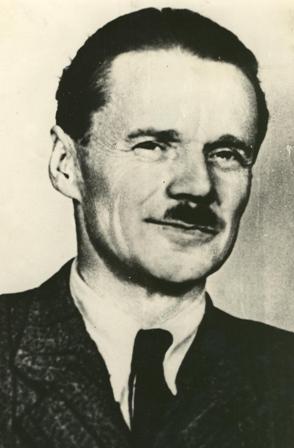
There had been frequent previous requests by those with a concern for the future of the arboretum at Mlyňany for its transfer to state ownership. In 1924, for example, Camillo Schneider had twice written to the Ministry, once in April and again in November. In a grandiose vision he outlined a plan of campaign for the future of the arboretum with a proposal to extend its area to over 100 ha of parkland, thus surpassing in size even the famous Arnold Arboretum in the U.S.A. He wanted to establish a nursery for ornamental trees and shrubs, predominantly evergreens, as part of the arboretum.
This nursery was to be a private concern managed by Jozef Mišák. He stressed that the foundation should remain an evergreen park, but that it should be added to and brought up to date.
Immediately afterwards, in 1925, Prof. Karel Domin also urged intervention by the state.
"The problem of preserving the beautiful parks of Czechoslovakia is then an extremely urgent one, and it is high time the competent offices of state proceeded without delay to formulate a plan for rescuing them before it is too late”.
(K. Domin)
Viktor Buchta, a radio broadcaster joined in. In 1929, amongst other things he wrote: “Does this park which is unique in central Europe, have to perish? Can a nation and state that prides itself in its culture allow this to happen? Who will answer for it before the court of public opinion? How will the present generation excuse itself to the next one for such a cultural crime?"
After a long period in which the arboretum stagnated, Ambrózy-Migazzi himself, together with Mišák, offered the arboretum for sale to the Ministry of Agriculture. The asking price was 7 million Czech crowns, but the appointed commission estimated its value at only 5.5 million and decided that the collection of trees and shrubs were just ordinary woodland.
In 1932 the author Karel Čapek also sounded the alarm with the following words: "I recently wrote in this newspaper about concerns for the celebrated Průhonice Park which has been designated as a botanical garden for Prague University. Today I should like to turn my attention to its equally famous counterpart in the heart of Slovakia, the unique park at Mlyňany near Zlaté Moravce which, thanks to the enthusiasm of an Hungarian aristocrat and the skill of a Czech gardener has been turned into a first rate centre for the acclimatization of evergreen plants, which is, in this respect, unique in Europe. Following the recent political upheavals, the owner has proposed to sell the park at Mlyňany to the state, but no agreement has been concluded, meanwhile the upkeep of this precious park has grown increasingly difficult. Now, Count Ambrózy-Migazzi is offering the estate at Mlyňany to the country in exchange for a corresponding area of woodland. Presumably the responsible authorities would not oppose such an exchange but bureaucrats are reluctant to take the initiative in such matters. So it is primarily up to the Slovaks and their cultural and political leaders to show an interest in this precious jewel which is an adornment not only of their own region but indeed of the whole country. With good management the park at Mlyňany, with its nurseries, vineyards and orchard could be developed into a flourishing business; it would be an ideal place for an agricultural and horticultural school and could be used to raise trees for schools, public institutions, the railways, etc. These are matters of costing and management but the unique park at Mlyňany is, above all, of immense cultural importance. Slovaks, don’t abandon it! "
In the period of the independent Slovak state which assumed power during the Second World War, the issue of nationalization of the arboretum was raised again, in particular by members of the Slovak University’s Botanical Institute (Dr. Břizický, Dr. Futák, prof. Nábělek, Dr. Májovský and Dr. Magic). As a result of their efforts the collection of trees at Mlyňany was made accessible to the staff of the university’s Faculty of Science.
A decree issued by the Committee of the Slovak National Council on the 20th of November 1945 resulted in the mansion and park being taken over by the state, but it was not possible at that time to obtain any of the surrounding area, even that part which the State Land Office had reserved for the future expansion of the arboretum, although Dr. Futák and Jozef Richtár tried in vain to negotiate with the local citizenry and the Agricultural Commission. However, the premises were preserved intact and the attempts of some small minded individuals to carve up the park were foiled.
In 1946 Mlyňany Arboretum came under the management of the Committee for Education and Information, which appointed an advisory council to assist in running both the Slovak University in Bratislava’s Botanical Garden as well as Mlyňany Arboretum. The scientists on the committee were represented by prof. F. Nábělek, assistant lecturer Jan Futák and assistant lecturer Ľ. Pastýrik; the Education Committee by Dr. O. Pavlík, Dr. J. Longauer, Dr. J. Babiak and Ľ. Mederly. Rudolf Kratochvíl was appointed chairman. Jozef Richtár used to attend the meetings as well, though he was later replaced by L. Sedlák, the new director at Mlyňany.
Since 1947 Mlyňany Arboretum has been run as a branch of the Slovak University’s Botanical Garden. As such it was mentioned in the handbooks of the Seed Index (Index seminum) which was distributed world-wide. During this period the mansion was completely restored, a five kilometre fence of iron stakes and wire mesh was erected round the perimeter of the park and the premises were connected to the electricity grid. At the same time the road to the mansion was improved, the fish ponds were cleaned, the nursery for ornamental trees and shrubs was extended, the collections of trees and shrubs were maintained and a considerable number of new trees were purchased. Since then student work parties have been organized to construct the network of paths, to clean up the park, to plant trees and help in the maintenance of the display areas. This activity was intensified after the disastrous drought of 1947, when several valuable trees died. At that point prof. F. Nábělek, Prof. M. Novacký, Dr. J. Májovský and many Czech dendrologists, especially prof. Albert Pilát, expressed their deep concern for the fate of the arboretum and its collection of trees. 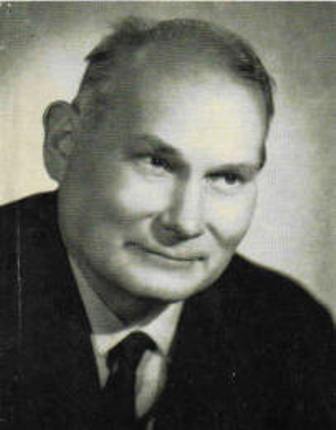
In 1948 on the initiative of R. Kratochvíl, chairman of the Advisory Council, two marble statues of lions were obtained from the park at Stupava and placed under a large turkey oak in front of what was at that time the entrance to the park where they still attract considerable attention. In addition a bronze sculpture of a deer (of unknown provenance), was erected on the parterre in front of the mansion but it was later moved to a spot nearby, where it was eventually replaced in 1967 by a bust of Ambrózy-Migazzi. The deer had been requested as an ornament for the Summer Palace of the Czechoslovak President at Topol’cianky and now graces the grounds of a small hunting lodge nearby. In exchange a statue of I. V. Michurin, a popular figure in the Soviet Union in the fifties, was sent to Mlyňany. It originally stood at Topoľčianky since foreign ambassadors were often received there. It was first erected at Mlyňany in the car park but was later moved to the Korean tree section above the reception area.
Unfortunately at the time when posts were being allotted by the Advisory Council (January the 7th 1946), Jozef Richtár, who lived a modest and reclusive life, was overlooked. This negligence on the part of his superiors depressed him. At the beginning of 1950, even though he was ill, he was still able to draw up a provisional list of all the trees then growing at the arboretum. His illness, however, progressed quickly and after a short spell in hospital in Bratislava he was taken to Litultoviec, his birthplace, where he died on the 23rd of June 1950. Every single member of the staff at Mlyňany attended his funeral.
In 1949 the Advisory Council elected Ladislav Sedlák director of the arboretum. He began his career as a teacher and later worked as a marketing manager for the university campus. As director of the arboretum he is credited with furthering its economic development. During his time as director several construction projects were undertaken, greenhouses were built and the vineyard huts repaired, but little scientific work was carried out. After a short time Sedlák was replaced by Jan Mucha, who had also been a teacher. He too, was director for only a very short period, from September 1950 to the end of May 1951.
On the 30th of May 1951, the Committee for Education, Science and the Arts, acting on a proposal by the Botanical Garden of the Slovak University of Bratislava, declared the Arboretum at Mlyňany a nature reserve with a total area of 61.1479 hectares lying in the parishes of Mlyňany and Vieska nad Žitavou. The same provision was to apply in future to any other territory that might be acquired by the arboretum.
Following a decision by the Board of Commissioners on the 11th of November 1952 the Arboretum at Mlyňany was handed over to the Slovak Academy of Sciences and the Arts. The arboretum became a formal part of the Academy of Sciences on the 1st of January 1953 and was allotted to the section of biological and medical sciences and on the 18th of June 1953. Professor František Nábělek was installed as head of the arboretum.

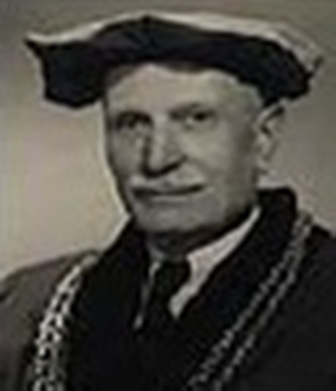
On the 1st of April 1954, by a decree of the Committee for Education, the arboretum at Mlyňany was declared a separate department of the Faculty of Sciences of the Slovak University in Bratislava. On the same day Dr. Gejza Steinhübel took up the post of director and Daniel Kovalovský was appointed the new manager of the park. These two men complemented each other perfectly, one being a brilliant theorist the other a very practical man.
On the10th of April 1954 Frantisek Benčat MSc, then still a 25 year old graduate, was appointed director of the arboretum. Before that he had worked as an assistant to Dr.Dezider Magic, professor at the Institute of Dendrology and Phytocoenology (the study of plant habitats) at the College of Forestry and Lumber Sciences in Zvolen.
Dr. Gejza Steinhübel, a botanist and physiologist, was born on October the 6th 1922 in Banská Bystrica. In 1947 he graduated from the Faculty of Sciences of the Slovak University in Bratislava, and from 1941 to 1951 worked as an assistant to professor Ľ. Pastýrika in the Institute of Plant Physiology. In 1951 he was appointed head of the arboretum and worked there until 1958. His principal scientific studies included seed germination, the physiology of woody plants and the history of ornamental garden design. His well-known book "Mlyňany Arboretum, Yesterday and Today" issued by the publishing house of the Slovak Academy of Sciences in 1957, gives an impressive account, in 171 pages, of the history of the arboretum from its foundation up to the time when it was incorporated into the Slovak Academy of Sciences and includes some biographical information about its founders.
Daniel Kovalovský was born on February the 20th 1911 in Pukanec, the son of a peasant. He was educated at the famous Eberhart (now Malinovo) Horticultural College where he graduated with excellence in 1932 and was recommended by the board of directors for the post of gardener at the National Business School in Oravsky Podzámok. Later, in 1935, the Ministry of Agriculture appointed him gardener in the Botanical Garden of the National College of Forestry in Banská Štiavnica. From 1937 to 1949 he worked as gardener for the Slovak National Museum in Martin and initiated a project there to create a Botanical Garden and other green areas in the town. In 1948, he worked briefly as head of the landscape gardening division of the former Baťa Company in Baťovany (now Partizánske). From the 1st of July 1951, at the request of the Education Committee in Bratislava, he took on the post of head gardener in the arboretum at Mlyňany. His contribution to the development of the collections at the arboretum was outstanding. He was an extremely practical man as well as an assiduous research worker. He devoted himself to the study of the vegetative propagation of vines, evergreen oaks, chestnuts and black mulberries. As a renowned dendrologist he participated in the expedition to China in 1960, bringing back many plants to Czechoslovakia for the first time. He also played a significant role in the development of the tree displays in the post 1953 period. He was a respected member of the Committee that was responsible for maintaining the Botanical Gardens of Czechoslovakia, but his vast knowledge was communicated to others mainly by word of mouth, publication of his professional work was rather sporadic. He died on 20th of April 1985 and was buried in his hometown, Pukanec.
Before the arrival of these scholars scientific work at the arboretum had been noticeable by its absence. The park had been used to provide for the economic needs of the state but its administration was poor and the library was in a state of decline. With their arrival work on the park was renewed and the library was supplied with new scientific works. A collection of drill cores from trees in the park was initiated, inventories were drawn up and a photographic archive put in hand.
Professor Frantisek Nabelek was born on May the 3rd 1884 in Kromeriz where he graduated from the State run German Grammar School in 1902 and in 1906 he graduated from the University of Vienna. This outstanding Czech botanist trained the first generation of Slovak botanists. In 1909-1910 he made a scientific exploration of Asia Minor, the Middle East and the Balkans and as a result created an extensive herbarium which is now preserved by the Slovak Academy of Sciences. He was responsible for the establishment of the Botanic Garden in Bratislava as well as the Botanical Institute in the Faculty of Natural Sciences in which he established both a large library and a herbarium. On his arrival at the arboretum in 1953 he drew up a comprehensive list of all the plants then growing in the park. He worked there until 1960 at the same time serving as chancellor of the Slovak University and sitting as a regular member on several committees. He died on the 10th of June 1965 in Uherske Hradiste.
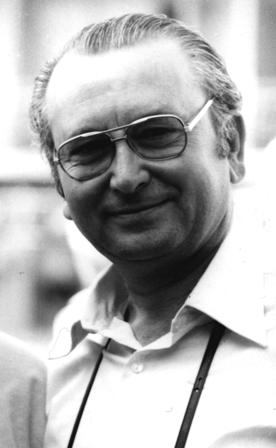
Dr. Frantisek Benčat, one of the most distinguished Slovak dendrologists, was born on September the 18th 1929 in Kozárovce. He graduated from the department of Forestry Engineering in the College of Agriculture and Forestry in Košice (VSPLI), where he had studied between 1948 and 1952. In 1951-1952 he began working as an assistant at the Institute of Dendrology and Phytocoenology in the same college and in the years 1952-1954 was employed in the Institute of Dendrology and Phytoceonology in the College of Forestry and Lumber Sciences (VŠLD) in Zvolen. From the 16th of April 1954 to the 15th of August 1954 he acted as an external director of the arboretum at Mlyňany and from the16th of August 1954 until the 31st of December 1989 was its resident director. In 1960 he defended his thesis on “The habitat and distribution of the Sweet Chestnut in Slovakia” at the College of Agriculture (PES) in Brno. In 1969 he qualified as a lecturer in the field of Dendrology at the College of Forestry and Lumber Sciences with a written thesis on "The Results of the Introduction of New Woody Plants in the Principal Forested Areas of Western Slovakia”. He submitted his PhD thesis on " The Introduction of New Woody Plants in the Natural Environment of Slovakia” at the College of Forestry and Lumber Sciences (VŠLD) in Zvolen in 1983 and obtained his doctorate in 1984. On the 27th of June 1990 he was awarded an Honorary Doctorate by the University of Horticulture and the Food Industry in Budapest (Kerteszeti es Elelmiszeripari Egyetem) on account of his scientific studies and his International activities. His book on the results of the introduction of non-native species entitled "An Atlas of the Distribution Zones of Non-native species in Slovakia” remains the supreme authority on this subject. He won several awards and together with Daniel Kovalonský initiated the program of acclimatizing the non-native trees and shrubs which were obtained by the expedition to China in 1960, and were planted at Mlyňany. He was made the acting Head of the Slovak Botanical Society of the Slovak Academy of Sciences and Deputy-Head of the Czechoslovak Botanical Society at the Czechoslovak Academy of Sciences (CSAS). His personal contacts with leading professionals in the foremost botanical institutions both at home and abroad were of inestimable value. He died on the 17th of January 2010.
In 1954 the first stage of clearing amongst the arboretum’s tree collections drew to a close and a programme of phenological observation and the assembly of an Index seminum were initiated. By 1955 the latter already contained 326 seed items, a list of which was sent out to 200 botanical institutions. A laboratory for the study of plant physiology and anatomy was also completed in that year. At the same time several other projects were launched, as, for example, a study of the contribution the parks in the Nitra region had made to the general economy, with the intention of extending the work to cover the whole of Slovakia eventually.
In 1955 at the same time as new foreign species were being planted in the arboretum, a special co-operative event was initiated involving the organization of a free exchange of seeds between arboretums and botanic gardens world-wide (the Index Seminum).
Expeditions to explore the native habitats of unusual tree species formed an important method of obtaining fresh biological material and several such expeditions were organized after the affiliation of the arboretum with the Slovak Academy of Sciences. International agreements over academic exchanges provided scientists with the opportunity to travel abroad and establish personal contacts with scientific colleagues. This enabled them to study the gene stock of imported trees in their natural habitats and to import foreign trees and shrubs, mainly in the form of seeds. They often brought back also valuable herbariums and photographic material.
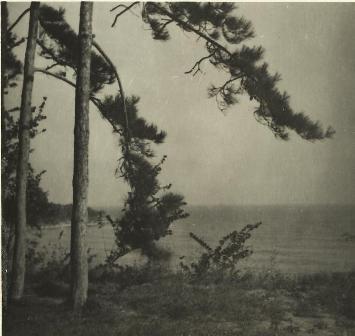
He also visited the regions around Sofia, Varna, Petric, Berkovica, Bansko, Plovdiv, Petrovo (Samdask) and Rila Monastery. He studied the gene stock of trees found in Varna, National Park and in Stara Zagora Park and besides the dendroflora of the Black Sea coast, he also examined the trees growing in the Pirin mountain range, the Rila valley, and at Levski Grad and Barkovice.
In January 1957 Benčat toured the Soviet Union, visiting the capital Moscow and its gardens and the areas around Chosta, Adler and Gagra. He carried out research into the gene stock of trees found in the regions of Yalta (Nikitský sad), Sochi (the Dendrarium, Nikitský sad, Vorošilov park) and Batumi (where Madzaravidze was director of Parks). He was able to observe the sweet chestnuts growing around Batumi as well as at Krasna Pol’ana near Sochi.
In May 1957 Benčat together with Kovalovský visited Poland. Their visit initiated a period of close co-operation between Slovak and Polish dendrologists. This was later reinforced by regular meetings arranged by the botanical institutions of both countries under the auspices of their respective Academies.
Staff members of the arboretum at Mlyňany visited the Academic Institute in Kórnik (run by Professors Bialobok and Browicz) and studied the rhododendron collections in Wojslavice, in Poznan’s Botanical Garden and in Krakow and Warsaw.

As a result of the expedition to China in 1960 (September 29th - December 2nd) a large number of seeds of East Asian trees, was brought back to Mlyňany. Subsequently in 1969 “An Experimental Area of Chinese Dendroflora” was set up. This was part of a project undertaken by Ivan Tomasko in the area which had been set aside for East Asian trees. It involved a major departure from Ambrozy’s original concept of an evergreen park, since it evolved into a more complex, scientifically managed method of planting non-native trees and shrubs entailing close ecological and physiological study of their adaptation and acclimatization and their arrangement in separate areas based on phytogeographical principals. An additional aim was to encourage the economic exploitation of the trees by urging their widespread adoption for ornamental parks all over Slovakia. The 1960 expedition included visits to northern China (Harbin and Beijing), central China (Suzhou, Shanghai, Wuhan, Nanjing, and Hangtschou and the subtropical borderlands of southern China (Chenjang, Canton, Guilin, and Nanning).

Associate professor Ivan Tomasko’s proposed experimental area of Chinese dendroflora gradually developed into the phytogeographical display of East Asia dendroflora. Trees and shrubs originating from Japan; Central, Southern and Northern China; the Far East; the Himalayas; the Caucasus; Asia Minor and Central Asia were planted in individual sections in a 14 ha area on the southern edge of Ambrózy’s original evergreen park. 
From the 26th of August to the 20th of September 1964 Benčat and Tomasko, made a botanical expedition to Central Asia where they studied the gene stock of trees in the areas of Transilinský Alatan, the Alma Ata valley, Arslam Bob, the Priliska desert, the Fergana range, the Talyš mountains and in several botanical gardens in Baku, Samarkand and Tashkent.
With the arrival of several new scientists and the institution of new scientific departments and following a decree issued by the Presidium of the Academy, which took effect from the first of January 1967 the arboretum at Mlyňany was renamed ‘The Institute of Dendrobiology of the Slovak Academy of Sciences’.
In 1967 the arboretum celebrated the 75th anniversary of its foundation and the director Benčat issued an assessment of the achievements of the employees of the Slovak Academy of Sciences over 15 years of work, including an evaluation of the progress made in acclimatizing non-native woody plant species. The original collection of approximately 550 taxa had expanded to 1,658, making the number of new taxa added since the arboretum had become a department of the Slovak Academy of Sciences, 1,108.
By the end of the seventies the expeditionary activity of the Mlyňany staff had slowed and seed material was thereafter obtained mainly via the Index seminum instead. At the same time the introduction of new taxa grown from the seeds obtained during the earlier visits to Chinese botanical institutions also came to an end. The first trees from the expedition to China had been prepared for planting in the East Asian display area and in the arboretum’s phenological bed in 1969. Here the acclimatization of the newly introduced woody plants was studied intensively and involved ecological and physiological research as well as phenology and dendrometry.
 Among the taxa, derived from seeds brought back by the expedition to China, and now growing in the Arboretum were examples of Acer oliverianum Pax. (847/63) and Euonymus grandiflora Wall. Ex Roxb. (52/63) both found in Ambrózy’s evergreen park; Liriodendron chinense /Hemsl./Sarg. (1019/64), Magnolia officinalis var. biloba Rehd. et Wils. (1034/64), Quercus aliena var. acuteserrata Maxim. (1069/64), Photinia villosa var. sinica Rehd. et Wils. (1058/64) all in the Phenological bed; Acer robustum Pax. (1929/63), Cercis gigantea Cheng (1844/63) and Ligustrum compactum Hook. (1325/66) were planted in the East Asian Dendroflora section. These taxa are still rare in most of the major collections found in Central Europe. According to recent data, of the 89 taxa of Chinese trees introduced by the expedition, 9 were conifers, 6 evergreen hardwoods and 74 deciduous broadleaved trees, all of which are still flourishing in the arboretum today.
Among the taxa, derived from seeds brought back by the expedition to China, and now growing in the Arboretum were examples of Acer oliverianum Pax. (847/63) and Euonymus grandiflora Wall. Ex Roxb. (52/63) both found in Ambrózy’s evergreen park; Liriodendron chinense /Hemsl./Sarg. (1019/64), Magnolia officinalis var. biloba Rehd. et Wils. (1034/64), Quercus aliena var. acuteserrata Maxim. (1069/64), Photinia villosa var. sinica Rehd. et Wils. (1058/64) all in the Phenological bed; Acer robustum Pax. (1929/63), Cercis gigantea Cheng (1844/63) and Ligustrum compactum Hook. (1325/66) were planted in the East Asian Dendroflora section. These taxa are still rare in most of the major collections found in Central Europe. According to recent data, of the 89 taxa of Chinese trees introduced by the expedition, 9 were conifers, 6 evergreen hardwoods and 74 deciduous broadleaved trees, all of which are still flourishing in the arboretum today.
A major achievement of the nineteen-eighties was the establishment of an area of North American dendroflora which became the second phytogeographical section in the arboretum. In 1975, an area of approximately 7.5 ha of land that had been a vineyard and orchard belonging to an agricultural co-operative on the northeast edge of Ambrozy’s evergreenpark was made available to the arboretum. The nature of the terrain in this area favoured a further increase in the number of taxa that could be grown, including some less hardy species of evergreen from the south-eastern United States. This new area has been planted with a homogeneous group, mainly of conifers, as the first stage in the creation of a display section for trees and shrubs from North America which will eventually provide a gene stock of trees native to the area stretching from Canada to California.
An order of the Presidium of the Slovak Academy of Sciences which took effect on the first of January 1980 made Mlyňany Arboretum part of the Centre for Biological and Environmental Sciences of the Slovak Academy of Sciences, and it was once again renamed as ‘The Mlyňany Arboretum - Institute of Dendrobiology of Slovak Academy of Sciences’.
In 1982 an important publication appeared with the title "An Atlas Illustrating the Spread of Foreign Imported Trees in Slovakia and the Regions in Which They Can Be Found.” It was so influential that the Institute of Dendrobiology (CBEV) at Mlyňany came to be regarded as one of the foremost Dendrological centres in the Europe. The author of this compendium was the director of the Institute, Frantisek Benčat, though valuable contributions were also made by many other members of the staff who had worked at the arboretum during the previous two decades or more. The Atlas included a detailed inventory of all the major parks and sites of dendrological interest in Slovakia, which are listed according to their importance and gives the dates when non-native trees and shrubs were introduced in them. An estimate of the varieties found in these collections at the time of publication was also made. The publication has both theoretical and practical sections, the theoretical section deals with the basic problems of introducing and acclimatizing non-native trees and shrubs and the practical atlas section illustrates the natural ecological zones of Slovakia where conditions are suitable for the introduction of new species and highlighting those areas where the procedures had been employed successfully. The scope and content of this publication, which is of immense practical use, has still not been superseded in Slovakia, even to this day.

Another expedition to North Korea which lasted from October the 9th to November the 3rd 1985 had as a goal the study of the dendroflora in the mountains of Mjong-Jan-San, Kum-Gan-San, Son-Do-Won, Pag-Jon, and Piro-Bong in the provinces of Won-San, Kan-Won, Kaesong and P’yongyang. The members of this expedition were Pavel Hrubík, Ivan Juhás and Pavol Vreštiak. This expedition was of shorter duration than the one in 1983 and the participants were accompanied by guides on a pre-arranged route and given a strict time limit.
As a result of the expeditions to North Korea, some less well known tree taxa can be found growing today in the Korean section of the arboretum, they include: Acer mono Maxim., Acer pseudo-sieboldianum /Pax/Komar.; Carpinus cordata Bl.; Prunus maximowiczii Rupr.; Quercus acutissima ssp. chenii /Nakai/Camus and Styrax japonicus S. et Z.
From the seventh of January 1990, by order of the Committee of the Presidency of the Slovak Academy of Sciences, the Institute of Dendrobiology at Mlyňany Arboretum ceased to be part of the Centre of Biological and Environmental Sciences of the Academy and became an independent unit.
In 1992 the arboretum celebrated its centenary. Just before, an inventory of the tree gene stock had been prepared under the guidance of Ivo Tabor. It was found that since the inventory made in 1967 the number of trees and shrubs had increased from about 525 taxa to 2,183 taxa growing in the 67 ha of the Arboretum.
In 1992, the work of the arboretum was reorganized and scientific research generally ceased, though the biotechnological laboratories were retained. The research workers left for other scientific institutes within the Slovak Academy of Sciences or in the Universities. The Institute of Dendrobiology at Mlyňany had nurtured five professors and several associate professors and doctors of Science all of whom had a lasting influence on scientific research in Slovakia in the fields of dendrobiology, ornamental horticulture and landscape gardening and had taught these disciplines to several generations of graduates.
In 1992, as a result of a grant, a project was initiated to create an area of Slovak dendroflora in about 4 ha on the north-west edge of the arboretum, within the area of Ambrózy’s Evergreen Park. It aimed to present the dendroflora of Slovakia in simulated habitats ranging from the cold, high mountain regions to the warm areas of the Slovak lowlands, which, it is hoped will be of interest to both Slovak and foreign visitors. The general intention was to attempt the propagation of endangered species outside their natural habitats thereby helping to ensure their survival.
On the first of January 1994 the official title of the institution was once again changed by order of the Presidium of the Academy of Sciences and it was renamed “ The Slovak Academy of Sciences’s Arboretum at Mlyňany” and was counted a contributing member of the Academy.
The last significant change in its organization occurred after a decision by the presidium of the Academy of Sciences which took effect from the 21st of March 2002; since then Mlyňany Arboretum is officially considered to be a specialised department of the Slovak Academy of Sciences and contributes to its management.
The period 1953 to 1990 was the second most successful period in the arboretum’s history in which the campaign to introduce non-native trees to Slovakia was re-launched. It saw an expansion in scientific research and the establishment of separate display areas based on geographical habitats. The arboretum has become the leading Slovak centre for research into dendrobiology and has one of the most important collections of non-native tree gene stocks in Central Europe.
"The mansion with its evergreen laurel terraces welcomed me as an old acquaintance. It is surely entitled to look with pride over its surroundings, on account of the large number of exotic plants, of a kind to which Central Europeans are quite unaccustomed, found nestling round it. The district stretches into the far distance where the silhouette of the Nitra range gently closes the view to the north as it fades into the horizon. Beauty ever enchants and the particular charms of an evergreen garden delight one again and again."
(C. K. Schneider)
(Translated by Roger J. Howell, UK)
References
BENČAŤ, F. The Dendroflora of Mlyňany Arboretum, a Review and Brief Analysis. Bratislava: Published by The Slovak Academy of Sciences. 1967, 122 pp.
BERO, R. - TÁBOR, I. - TOMAŠKO, I. Mlyňany Arboretum. Bratislava: Veda, 1992. 119 pp.
HOŤKA, P. - FOGADOVÁ, K.: The Results and Conclusions concerning the Expedition to China Undertaken by Staff of Mlyňany Arboretum in 1960. In: Dendrological Days in Mlyňany Arboretum in 2008. Autochthonous and allochthónous woody plants in new environmental settings. –Vieska nad Žitavou: Mlyňany Arboretum of the Slovak Academy of Sciences, 2008. p. 44-56, ISBN 978-80-970028-9-3.
KRÁLIK, J. Let us Teach our Compatriots. In: Pukanec News, Vol. 2002, No. 1 (January-February) http://www.pukanec.sk/noviny_text.php?src=2002_1
STEINHÜBEL, G. Mlyňany Arboretum. In “ Yesterday and Today”. Bratislava: Published by the Slovak Academy of Sciences, 1957. 171 pp.
TÁBOR, I. - TOMAŠKO, I., The Gene Pool and the Tree Displays at the Arboretum. Mlyňany Arboretum, 1992. 118 pp.
 4,8 °C
4,8 °C


